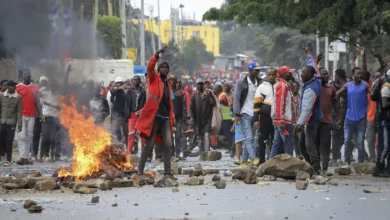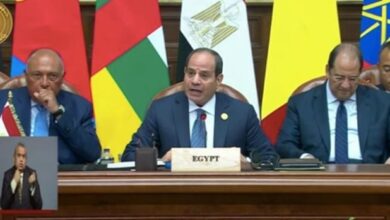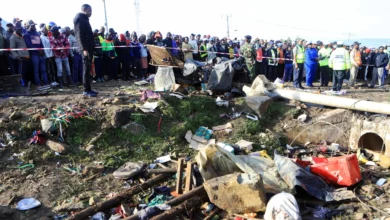Juba–Tomorrow is the day when all roads in Southern Sudan lead to the ballot boxes. Tension is almost palpable.
Yet the question now is whether the elections will be devoid of interference from the north.
Already there is skepticism in many corners of the south, following a television interview with Sudan’s President Omar al-Bashir broadcast yesterday by an Arabic international news channel in which he blamed the South for pushing for separation. This is seen as a departure from his stand a week ago when he visited Juba and pledged to be the first to recognize the separation of the South from the North.
Southern Sudanese will be casting votes to decide on whether to secede from the North. Southerners say separation, as laid out in the Comprehensive Peace Agreement, is inevitable
There is already a carnival mood across the southern region, with Juba, the capital city, on Friday seeing plans made for celebrations if the South secedes. Thousands of excited Southern Sudanese poured onto the streets, majestically matching in a colorful final campaign that almost brought the city to a standstill.
Excited crowds snaked through the streets of Juba on motor bikes, four wheel vehicles and by foot, as an instrumental band led the way.
“We are prepared to vote for our separation from the North. Southerners have waited for so long to secure their independence,” says Fermo Ogila, a church leader with the Pentecostal Church.
Hundreds of vehicles had campaign posters pasted on them, with passengers waving miniature national flags. Larger flags were hoisted on vehicles almost swaying in time to the beats.
A battery of journalists who have pitched tents in Juba followed the convoy, clicking away with their cameras as others perched on vehicles capturing every moment of the unfolding historic event that may lead to the birth of a new African nation.
It is not only Sudanese nationals that have spread across the South. The entire Southern Sudan region is teeming with foreigners. Most hotels are filled to capacity. At the airport airplanes have been delivering passengers daily from all corners of the world. Juba-bound airplanes have been over-booked in the last two weeks.
Neighboring Kenya hopes that the referendum in Southern Sudan will end peacefully, but has announced plans to deal with an influx of refugees should it turn violent.
Addressing Kenyan media on Friday, Kenya’s acting Foreign Affairs Minister George Saitoti said his country is preparing for any eventuality and that contingency plans have been put into place to receive up to 20,000 refugees at once if it comes to it.
He said that his government and the United Nations High Commissioner for Refugees (UNHCR) have made arrangements to host refugees in case violence breaks out in Southern Sudan after Sunday’s referendum.
The plans include intensifying security along the two countries’ common border, and the registration and documentation of refugees who may flock to the country.
The number of Sudanese returnees streaming to the South from the North to participate in the vote on secession is now over 100,000, the United Nations Office for the Coordination of Humanitarian Affairs (UN-OCHA) reports.
These numbers reflect a sustained surge, despite the end of voter registration. A UN-OCHA report circulated after a coordination meeting on 27 December 2010 indicates that the numbers of southern Sudanese returnees now stands at 106,000. This number, verified by the South Sudan Relief and Rehabilitation Commission (SSRRC), has risen sharply from the 53,000 reported by UN-OCHA in mid-December.
As the numbers increase, relief organizations are positioned to respond to the rising challenges of shortages of food, shelter, water, health care and sanitation.
According to UN-OCHA, movements by river and overland organized by the government of southern Sudan continued in earnest.
Since the launch of this effort in October, 87,596 individuals have been tracked passing through Kosti region alone by the International Organization for Migration (IOM) and the Adventist Development and Relief Agency (ADRA) team. The region is the major north-south gateway.
The figures provided for December exceeds by nearly 268 percent that of previous years and represents the highest monthly figure of spontaneous returnees over the last three years.
Roughly 80 percent of returnees to the southern states transit through the Kosti hub, so numbers tracked there are highly indicative of major trends. The cumulative total for spontaneous returnees tracked through Kosti in 2010 has now reached 41,293, including 19,885 for November and December alone.




